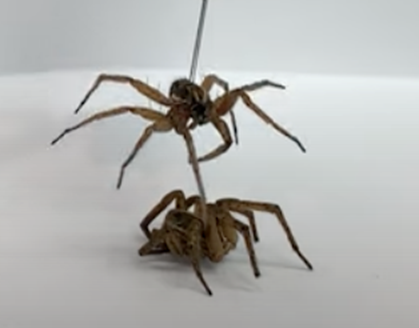Hearing the word “spider” prompts a negative reaction for many of us. Not so for Rice University engineers that are repurposing deceased spiders as mechanical grippers that can blend into natural environments while picking up objects that outweigh them.
The researchers say that a dead spider is the perfect architecture for small-scale, naturally derived grippers. An open-access study in Advanced Science shows how the researchers harnessed a spider’s physiology as a first step toward a novel area of research they call “necrobotics.”
The lab specializes in soft robotic systems that often use nontraditional materials, including hydrogels and elastomers that are actuated by chemical reactions, pneumatics, and light.
The scientists use wolf spider cadavers that can reliably lift more than 130% of their body weight. They had the grippers manipulate a circuit board, move objects, and lift another spider.
Spiders only have flexor muscles, which allow their legs to curl in and extend them outward by hydraulic pressure. They can’t pressurize their bodies when they die, so they curl up. Internal valves in the spiders’ hydraulic chamber, or prosoma, allow them to control each leg individually.
The lab ran one ex-spider through 1,000 open-close cycles to see how well its limbs held up and found it reasonably robust. Applications could include pick-and-place tasks, repetitive tasks like sorting or moving objects around on a small scale, and maybe even microelectronics assembly.
For more information and to see a video of necrobots in action, watch this video.

